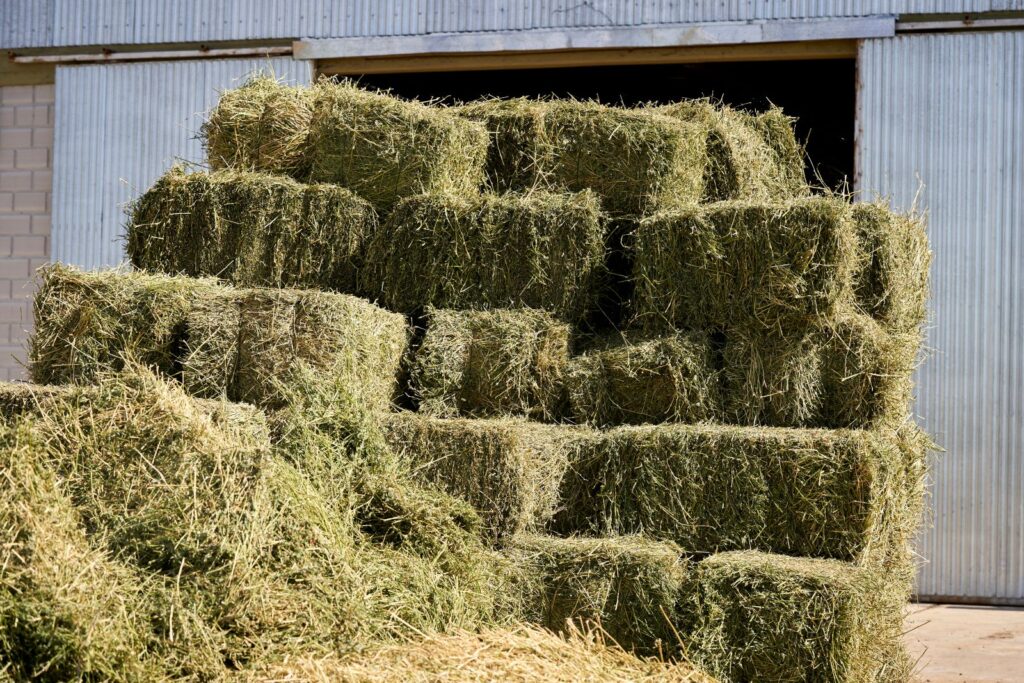Assess forage stocks now to avoid shortfalls this winter
3rd August 2023
A timely appraisal of forage stocks now could pay dividends this winter, with experts predicting farmers could battle severe shortages in the housing season following a wet spring and mixed summer.
Waiting to deal with forage shortages until winter could be a costly risk, and farmers should take action now to avoid a crisis later in the year, explained nutritionist Dr Kerensa Hawkey and head of forage and grassland agronomy Lisa Hambly in an episode of the Mole Valley Farmers’ Podcast.
“There is a window of opportunity right now that farmers can take to address any forage shortages,” Ms Hambly said. “Have those conversations and think about optimising what you are doing and do it now rather than wait until the winter when everyone else will be looking.”
Forage stocks are expected to be down in many areas following the second consecutive poor forage growing year, with many farmers having used up more of their forage reserves last winter, Dr Hawkey added.
What’s more, forage crops are likely to have struggled this growing season following a wet spring and an extremely dry start to the summer. Maize has had a difficult start in many areas of the country, with experts predicting yields down on some farms by as much as 30%.
Both Ms Hambly and Dr Hawkey stressed the importance of farmers accurately measuring their clamps and forage stocks, the amount of stock that needs feeding and calculating a realistic view of how long forage will last.
This must take into account all stock from dry cows, milking cows, youngstock, any sheep or other animals that eat forage, too,” Dr Hawkey remarked.
How to extend forage stocks this winter
Measures suggested by the two experts for overcoming forage shortages in the coming months include:
1. Looking for opportunities by walking the fields
Ms Hambly said: “If you’ve got bare fields, that is a fab opportunity. Warm soils and moisture provide good crop growing conditions, so it could provide an ideal opportunity to establish grass or a brassica.
“Also, be prepared to put a grass crop in after maize. You can just drive through with the seed; you don’t need to plough,” she added.
2. Outwintering youngstock
Dr Hawkey reminded farmers considering outwintering to feed youngstock enough to maintain growth rates and reduce any metabolic diseases at calving. “Youngstock are the future of your herd, so you need to look after them,” she said.
3. Feeding youngstock straw with a protein supplement
Offering livestock straw with a supplement such as high-protein molasses could help extend stocks of grass silage.
Dr Hawkey added: “Protein is important for youngstock to grow frame. Farmers also need to feed enough physically effective fibre, ensuring an adequate forage-to-concentrate ratio. If you don’t feed enough forage, then the rumen won’t work properly and can lead to acidosis.”
4. Considering forage extender products
Examples include blends, nuts and moist feeds. Dr Hawkey said: “One kilo of concentrate can replace 3kgs of silage. If you add that up across a 200-cow herd over a month, you can save a lot of forage.”
5. Optimizing grass by overseeding
The experts also recommend farmers consider taking extra grass silage cuts this autumn if conditions allow.
6. Using a good-quality silage additive
This could help minimise dry matter (DM) losses in the clamp.
7. Using a grain treatment to increase protein content
Grain treatments such as Maxammon will help increase the protein content of wholecrop and improve the quality of the diet.
Dr Hawkey said: “Stable treated wholecrop could balance out poorer maize. It can also reduce the need for bought-in protein and is easy to handle on farm.”
Caustic-treated wheat can also improve digestion by creating a higher pH and providing a high-energy feed for early lactation cows. However, both must be fed as part of a balanced diet.
For nutrition and agronomy advice, farmers can get in touch with the Mole Valley team today by phoning the Feed Line on 01566 780261 or the Grassland & Forage Line on 01769 576232.

